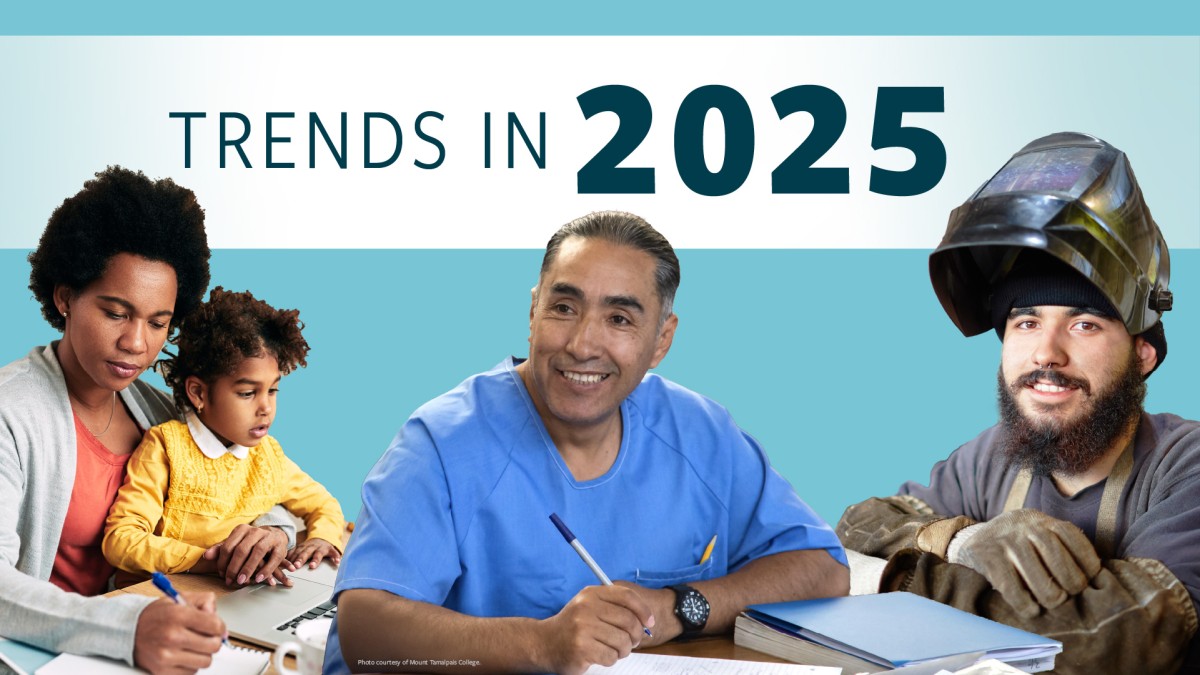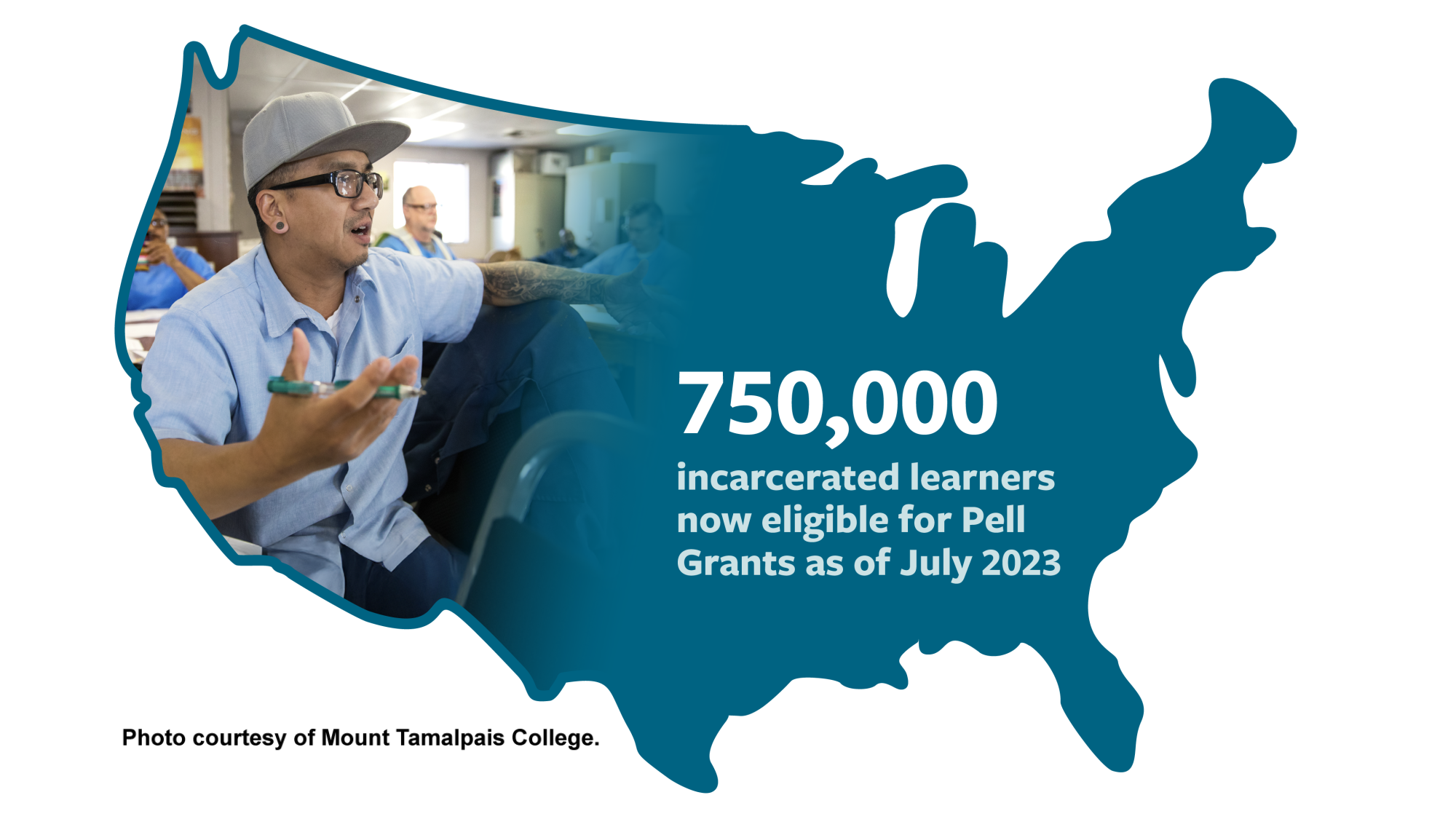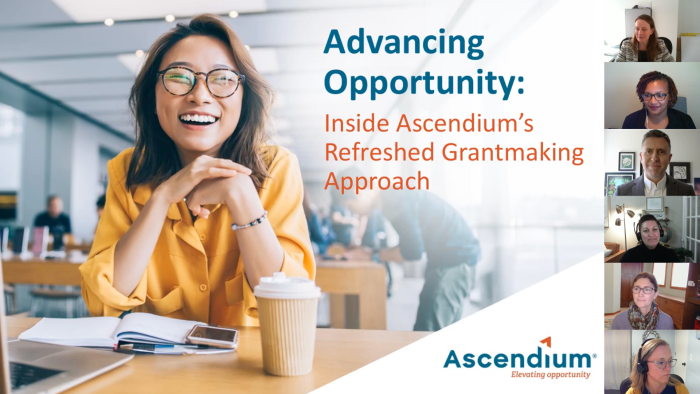
Postsecondary Education and Workforce Training Trends We’re Watching in 2025
As we launch into 2025, here are a few of the major trends we're observing that will impact our grantmaking and the learners we serve. Across all these trends, we see growing recognition of the need for more inclusive, flexible, and effective pathways that enable learners from low-income backgrounds to get good jobs. We will continue in 2025 to play our part in identifying, evaluating, and helping to scale those pathways so that more learners have the opportunity for upward mobility.
Growing momentum around creating a more learner-centered postsecondary experience that connects to a good job.
According to Lumina Foundation, 34% percent of today’s college students are 25 years of age or older. The majority are working, many of them full-time, and 18% have children or other dependents. Additionally, learners and their families are increasingly questioning the value of attending college (Inside Higher Ed). These shifts in demographics and in mindset have caused postsecondary institutions to think more deeply about what success looks like. It can’t only be about obtaining a degree or credential; success needs to start with a learner-centered postsecondary experience, with institutions asking themselves what support they can provide to learners to ensure they are on the pathway to a good job after completing their program.
According to Lumina Foundation, 34% percent of today’s college students are 25 years of age or older. The majority are working, many of them full-time, and 18% have children or other dependents.
In response, some colleges and universities are expanding the role of advisors who connect learners with both academic and non-academic services and supports (U.S. Department of Education). In many promising cases, learners have access to embedded work-based learning experiences, support for basic needs, holistic advising, and other interventions that can help them complete their degree, improve their experiences navigating postsecondary education, and smooth the transition to career. These approaches are important for helping learners from low-income backgrounds see the payoff of their investment of time and money.
Leading colleges around the country are also evolving and innovating in the programs they offer and the clarity of the paths from those programs to good jobs. For example, the Unlocking Opportunity initiative, led by the Aspen Institute College Excellence Program and Community College Research Center, is helping 10 community colleges assess the mix of programs they offer, eliminate those that don’t offer strong employment or transfer outcomes, and help direct learners to the programs that best fit both their career goals and needs in the local labor market.
Increasing demand from learners and policymakers for short-term education and training with direct links to careers in high-demand fields.
For many people seeking opportunities for upward mobility, the best path may be short-term workforce training programs or work-based learning opportunities directly linked to specific industries. These include a growing field of apprenticeships, microcredentials, and industry-recognized certifications. Some of these models enable participants to continue earning an income while learning the skills required for entry into a career.
All of this requires investment from government and business stakeholders, who benefit from having trained workers to fill local labor needs. States are increasingly investing in these programs, with one study identifying 59 initiatives across 28 states to increase the availability and quality of short-term credentials through investments totaling at least $3.81 billion (HCM Strategists). One notable example is state and federal investment in the semiconductor industry. In Ohio, the state’s government and community colleges have partnered with Intel to identify barriers for learners and design curricula that prepare local talent for 3,000 new tech jobs (The Christian Science Monitor).
Further attention and resources to strengthen pathways and connect systems in the wake of Pell Grant reinstatement for incarcerated learners.
The July 2023 reinstatement of Pell Grant access for incarcerated learners opened the door for approximately 750,000 new students to become eligible for critical funding, offering them the opportunity to pursue degrees and skills that can transform their lives (Vera). As access grows, so does the need to integrate both currently and formerly incarcerated learners into broader educational systems, ensuring they receive the support necessary for academic and career success.

Like many learners, incarcerated learners are likely to earn credits from multiple institutions and in various settings as they pursue postsecondary credentials. For them, as for others, consistent, supportive structures and clear information about credit mobility are critical to ensuring that all prior and current learning counts towards a degree. Strong academic advising, combined with learner-centered credit transfer policies and practices, is key to helping these learners stay on track.
But educational success isn’t the end of the journey — it’s just the beginning. Ensuring learners with a history of incarceration are able to leverage their credentials to access good jobs after release requires seamless pathways that extend from prisons to college campuses, community-based support networks, and employers. By connecting these systems, we can ensure that incarcerated learners not only complete a meaningful credential but successfully leverage it to secure stable employment.
Ascendium is committed to supporting these pathways through targeted grantmaking that enhances program quality, advances research, and provides technical assistance specifically designed for this distinct population of students. Our goal with these strategies is to ensure that many more incarcerated learners not only gain access to meaningful postsecondary education or workforce training while incarcerated but also receive the support they need to thrive after their release.



